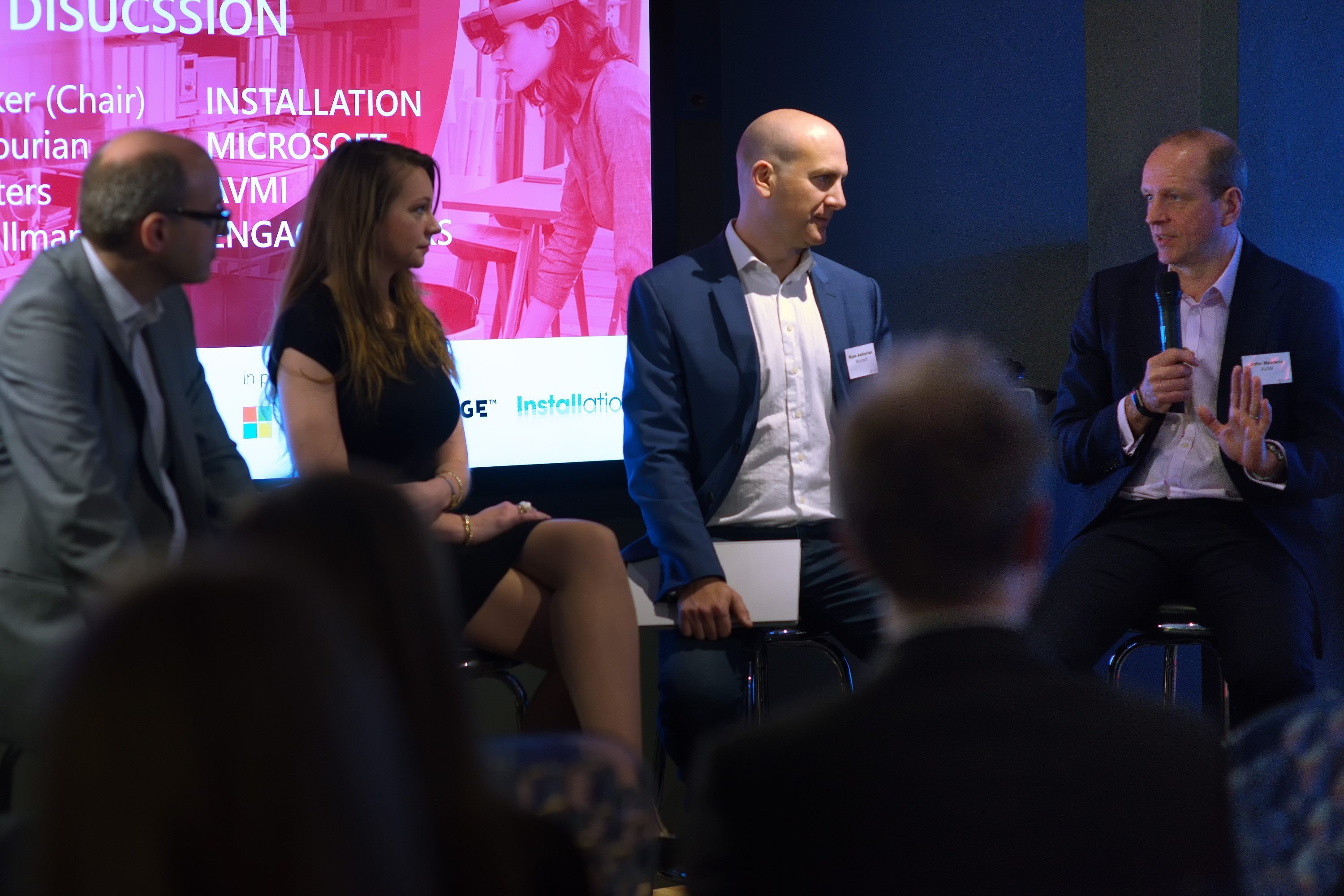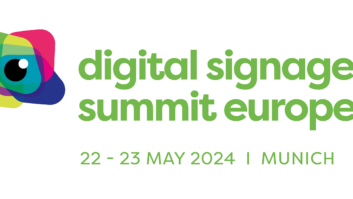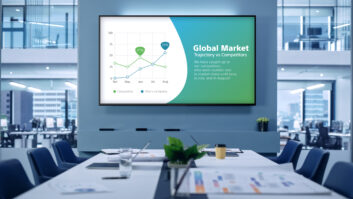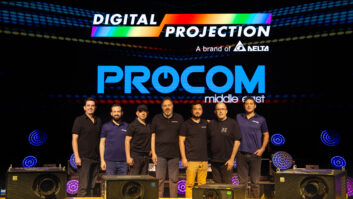
We were recently invited by integrator AVMI to chair a panel discussion on driving digital transformation in the workplace. Paddy Baker reports on the key points.
As part of AVMI’s Digital Workplace Transformation client event on 28 March, I chaired a panel discussion on driving digital transformation. The panellists were: Ryan Asdourian, Windows and Surface business group lead, Microsoft; Amelia Kallman, global head of innovation at Engage Works (whose Flux Lounge in London hosted the event); and John Masters, business development and marketing director at AVMI.
What does digital workplace transformation mean to you?
“For me this is all about bringing in those solutions and technologies that enable us to work fluidly across the whole workforce,” said John Masters of AVMI. “It’s not just about sharing content, it’s about creating content, and being able to harness that wonderful human attribute of innovation.”
He added: “It’s great to see organisations like [IT analyst] Gartner talking about how the user base are really asking for tools to support these newer ways of working.”
Amelia Kallman of Engage Works felt that providing the right digital tools can help with employee engagement: “We’re finding that in the new millennial group – they call them the job-hopping generation – 71% say they’re unengaged in the workplace, and they’re more prone to go from company to company.”
She remarked that, while automation is set to disrupt the world of work, “I see technology as an enabler to making sure that people want to come to work, and want to talk to each other and collaborate, to come up with these new ideas. Because that’s how it’s going to happen; it’s not just going to be automated. AI and automation will assist in future ideas and innovation, but it comes from getting the right people in the right room at the right time with the right kind of tools.”
For Ryan Asdourian of Microsoft, the key is making time for creativity: “If I think about time as my scarcest resource – creativity is the thing that everybody that I work with has the least amount of time for. Where you really enable digital transformation for your employees, it’s the biggest return on investment on talent and on output that I think you can get.”
Should digital transformation be driven from the top of the organisation downwards, or should it be bottom-up, driven by demand in the workforce?
“I think it is a duty of companies to start to implement new technologies and innovations from the top level,” said Kallman. But for those worried that the world they know is disappearing, she had words of reassurance: “The word ‘disruption’ gets thrown around a lot and I think it’s out there to scare you, to destabilise people, and to make you think that all of a sudden everything’s changed – well, that’s not just true. This is an evolution, it’s not a revolution.”
“I would say it’s top-down and bottom-up,” said Asdourian. “Digital transformation is only possible with everybody. It’s about what is the job of these tools? What part of digital transformation are you enabling with them? It’s everyone’s responsibility.”
Masters agreed, and cited a classic McKinsey study: “It talks about how technology has taken a lot of the transactional aspects of business out so they can be offshored or outsourced, leaving businesses running what are called the tacit tasks, the very challenging, creative tasks at the top of the pyramid. There’s this growing pressure now to be better at doing those tacit tasks, and that’s what’s driving demand for us all to have a better work environment.”
How easy is it to discover the customer requirement and convert that to a product specification?
“When I’m talking to customers, the conversation is about what they are you looking to do,” said Asdourian. “What does digital transformation look like to you as a customer? Because it looks different to everyone.
“It’s not about asking which customers have meeting rooms, because almost all customers have them. It’s about finding out how each customer wants to digitally transform, and how they want to use the technology, and then making sure that we’re fitting our solutions into the space that help each customer. “
Masters made the point that solutions that are overly simple don’t always fulfil business needs. He compared the Surface Hub with the iPhone, which drove demand for mobile data because “it is the most amazingly clever, complex piece of technology, but it made it simple for the user.
“I think the Surface Hub has hit exactly that same point. It’s brought together a lot of complex things – apps, hardware, and it’s built on a UC platform. It’s amazingly clever, and amazingly complicated – but it makes it simple for the user. So it could be a tipping point.”
An audience question: with malware, ransomware and denial of service attacks being reported frequently in the press, how important was security to Microsoft when the Hub was being designed?
Asdourian explained that having Windows 10 as the operating system on the Surface Hub and on every Microsoft device, regardless of size, means there is one single security model. “The reason for one security model, and for moving to Windows as a service, is because we want to create the most secure environment, and we want to create the same sort of identity, security, data model, running across every device, across everything that you do – full stop.”
In addition, there is a security feature that is specific to the Surface Hub: “When you’re done with your meeting, when you click out and say the meeting is over, all of the information is completely erased. Even if you ripped out the hard drive from one of these units – and that would be tough – all of it is completely secure.” These security features, he added covered both threats from outside and those arising from internal incompetence or malice.
What are the biggest challenges in driving digital transformation through the workplace?
For Kallman, thinking strategically is key. “Integrate things so that they make sense, don’t just put a screen into a room because you think you want a screen. You always go back to what people want to accomplish and the value it’s going to add to their business.”
She identified another potential challenge to adoption: “People can be apprehensive because they don’t want to be embarrassed.” The answer is to provide hands-on opportunities (such as those provided in the Flux Lounge. “You can talk all day about a new technology but unless people can get hands on with it, and experience it, it becomes difficult to share the value and let them understand the impact it will have on their lives.”
Masters cited another challenge: “Being able to capture the benefits in a return on investment model that can get through a cynical finance department, because this stuff is not cheap – not only the technology but all the services and support that go around it.”
He felt that “over the next year or two we will see more anecdotes and case studies and return on investment models, and hopefully that will smooth the way for projects to get approved.”
A question from an audience member from the financial sector: are companies becoming braver about opening themselves to new technologies?
“I think they are getting braver,” said Kallman. “There’s a sense that everybody needs to transform because their competitors are transforming and other industries are transforming. I always say that the biggest indication of what’s going to come to your business, you’re going to see [first] in other industries.”
Asdourian felt that some companies that change because they want to innovate, while others change out of necessity – the latter being the slower. “As the competition creeps in to companies, that is sometimes what necessitates change. But there will still be companies that move slowly.”
Masters felt that, while most industries focus on improving internal operations, there are opportunities in other parts of the business. In the asset management field, with high net-worth clients, “you don’t have to have a face-to-face every six months; you can an analyst doodle his thesis on why the fund he’s recommending is a great fund, and he can do it over that via something like the Hub to the client in his Monaco flat. I think we’re just starting to touch on the real applications that can drive extra business and value.”
Finally: is digital workplace transformation a journey or a destination?
“It’s absolutely a journey, because there is no destination,” offered Kallman. “Like I said earlier, it’s evolution, it’s not a revolution. It’s always a journey in my opinion.”
Asdourian mused on whether it could be an evolution and a revolution at the same time, before saying: “It’s a journey – just let us know which part of it you’re on, and we want to help.
Masters’ reply put me in mind of his earlier remark about cynical finance departments: “It’s definitely a journey – unless you’re talking to the CFO, in which case it’s absolutely a destination!”
www.avmi.com
www.engageworks.com
www.microsoft.com/microsoft-surface-hub







